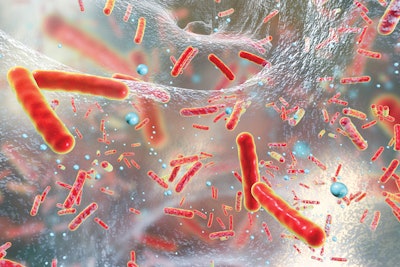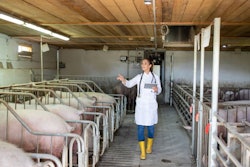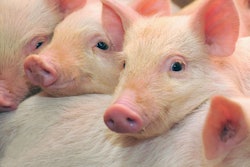
Infection with Lawsonia damages cells responsible for nutrient capture, slashing feed efficiency, study finds
Reduced feed intake may not be solely responsible for feed efficiency and performance losses experienced by pigs suffering from ileitis, according to new research from Iowa State University.
After 21 days of infection with Lawsonia intracellularis, the bacteria that causes ileitis, cells within the affected pig’s intestine may look normal, but they are in fact missing some “digestive and absorptive machinery,” said Nicholas Gabler, one of the study authors and a professor of swine nutrition and physiology at Iowa State University. In particular, the cells appear to have a limited ability to produce an enzyme critical to the digestion of carbohydrates, according to Fernando Leite, technical manager for enteric disease at Boehringer Ingelheim Animal health, which participated in the study.
While feed intake declined 27% over the course of the infection compared to unaffected pigs, the apparent changes to intestinal cells also contributed to a 25% decrease in feed efficiency, according to the study. Vaccination against Lawsonia prior to infection limited the feed efficiency losses to 8%.
“One of my main goals for the last six to seven years has been to walk through different pathogens and help industry understand what is happening, and where are the opportunities to mitigate” the effects of the disease with limited use of antibiotics, Gabler said. In the case of Lawsonia, he said, “we have an understanding of he growth rate difference, because that is easy to collect, but what is really happening with feed efficiency and nutrition in the pig?”
In many of the studies, Gabler said, his work has determined that most of the performance losses are the result of the animal going off its feed. But Lawsonia, it turns out, is an exception.
The study’s results, Gabler said, point to the need for biosecurity to prevent infection. But given the prevalence of Lawsonia — which is estimated to afflict some 30% of pigs at some point during the growing and finishing stages — Gabler said the study also confirmed vaccination can help mitigate the worst effects of the disease.
“Some producers may choose to medicate for this disease, but this study shows this vaccine can be an effective tool to improve feed efficiency and prevent the disease in the first place.” Leite said.
What remains unclear, Gabler said, is exactly how long the damage to the intestinal cells persists after infection with Lawsonia. This particular study did not follow the course of infection after 21 days. So while Gabler doesn’t believe the effects on the intestine are permanent, he said more research is necessary to determine how far beyond 21 days it may persist.















